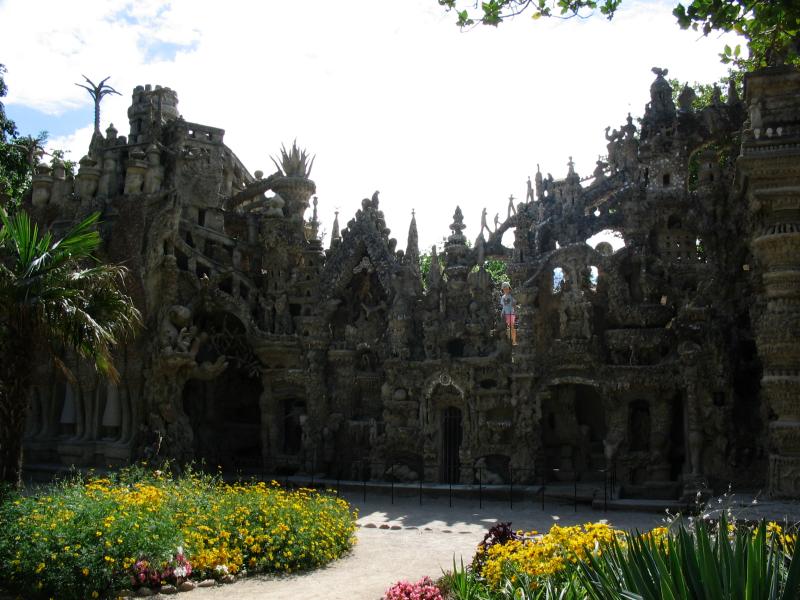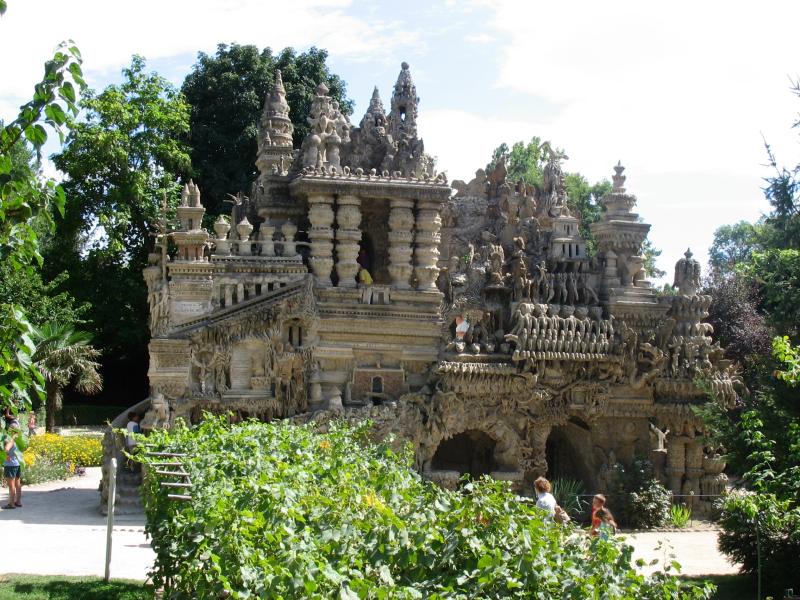

Photograph by EMMANUEL GEORGES
Ferdinand Cheval’s Ideal Palace (Palais idéal) stands as a testament that you can achieve anything with time, effort and passion. How else could a simple postman with no formal training, single-handedly build something to the admiration of Picasso, André Breton and André Malraux?
Please enjoy the gallery of photographs below along with a history behind the palace and Mr. Cheval. And if you’re ever in Hauterives, France, make sure to drop by the Ideal Palace!
2.

3.

Photograph by EMMANUEL GEORGES
4.

Photograph by CLAUDE TRAVELS
5.

Photograph by CLAUDE TRAVELS
6.

Photograph by CLAUDE TRAVELS
7.

Photograph by CLAUDE TRAVELS
8.

Photograph by PHILADELPHIA’S MAGIC GARDENS
9.

Photograph by CLAUDE TRAVELS
10.

Photograph by CLAUDE TRAVELS
FERDINAND CHEVAL’S IDEAL PALACE
Born in 1836, Cheval lived a long life of respectable poverty, apprenticed first to a baker at age 13 and then entering the postal service in 1867. One day on his route he tripped over a stone, picked it up and was taken aback by its bizarre shape.
From that day forward his 33-year quest to build the Ideal Palace began. He started collecting stones of interest along his route in his pocket. Eventually he upgraded to a bag and ultimately a wheel-barrow that he would trudge along his entire route; to the chagrin and confusion of many.
Once home, he worked on his Ideal Palace tirelessly at night, often by light of an oil lamp. He spent the first 20 years building the outer walls and eventually began the interior and decorative aspects. Nothing was beyond the scope of his own imagination. His version of a Hindu temple stood next to a Swiss chalet which stood next to the Maison Carrée in Algiers which stood next to a medieval castle, and somewhere in between there was an Arab mosque. The tutelary spirits of the place, the facteur declared, were Julius Caesar, Archimedes and Vercingétorix.
The grounds were planted with cacti and palm trees. The end result? a structure 26 meters (85 feet) long and over 10 meters (30+ feet) high. Cheval completed his Ideal Palace in his 70s. He then opened it up to the public for all to enjoy. His wish was to buried in it but was refused permission and eventually set forth on his final project, building an equally complex and magnificent tomb. In 1924 at the age of 88 Ferdinand would take permanent rest there.
In 1969, André Malraux, the Minister of Culture, declared the Palais idéal a cultural landmark and had it officially protected. And in 1986 Cheval was put on a French postage stamp.
[Source: NEW YORK TIMES]
11.

Photograph by CLAUDE TRAVELS
12.

Photograph by CLAUDE TRAVELS
13.

Photograph by PHILADELPHIA’S MAGIC GARDENS
14.

Photograph by CLAUDE TRAVELS
15.

Photograph by CLAUDE TRAVELS
16.

Photograph by CLAUDE TRAVELS
17.

Photograph by CLAUDE TRAVELS
18.

Photograph by CLAUDE TRAVELS
19.

Photograph by EMMANUEL GEORGES
20.

Photograph by CLAUDE TRAVELS
VISITING THE IDEAL PALACE
2011 FEES
Adults : 5,60 € ; with Audio Guide : 7,60 €
Children (from 6 to 16) : 4 € ; with Audio Guide : 6 €
Students* : 4,60 € ; with Audio Guide : 6,60 €
*(On presentation of the student card)
Group Fees (15 OR MORE)
Adults : 4 €
Children (from 3 to 16) : 3 €
Days of Operation
Open every days except 12/25 and 01/01
Closed from 01/15 to 01/31
For more information please visit: http://www.facteurcheval.com
21.

Photograph by CLAUDE TRAVELS
22.

Photograph by CLAUDE TRAVELS
23.

The Tomb of Ferdinand Cheval | Photograph by WIKILUG
24.

Photograph by CLAUDE TRAVELS
25.

Photograph by HIDEHIKO NAGAISHI
If you enjoyed this post, the Sifter highly recommends:
Pierre Cardin’s Bubble House ‘Palais Bulles’ by Antti Lovag






